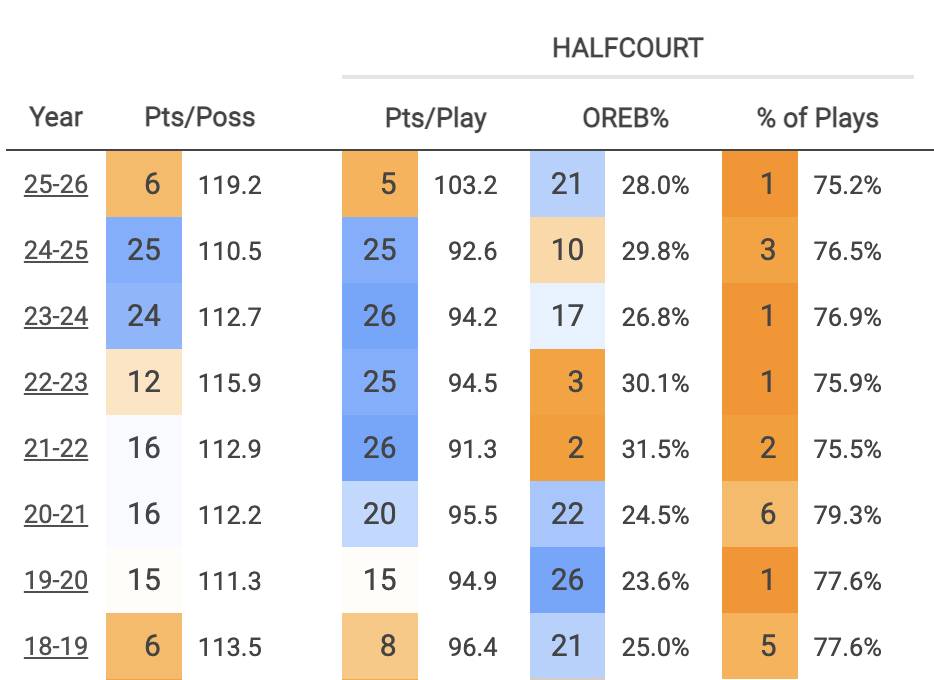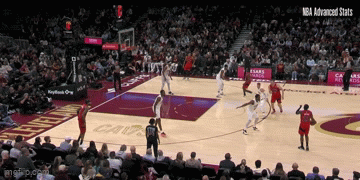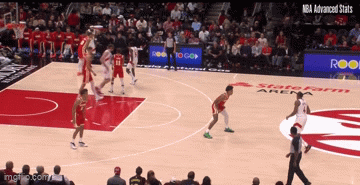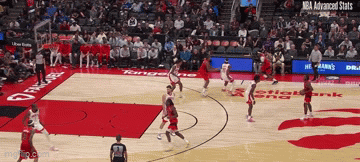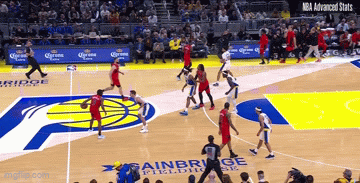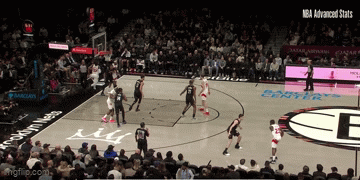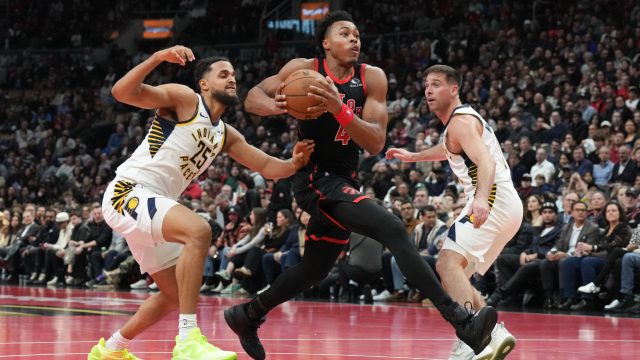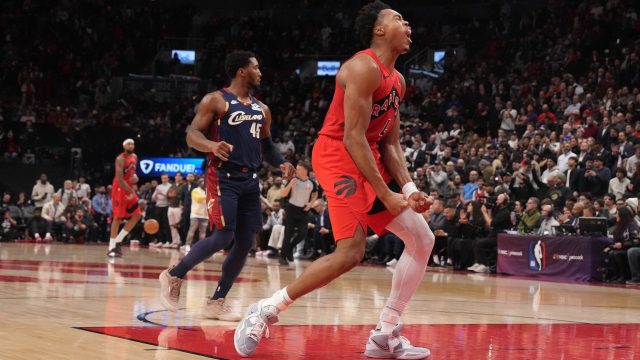
The reason why the Toronto Raptors traded for and signed Brandon Ingram was on full display Wednesday night as he sank a tough, contested pull-up jumper over Pascal Siakam with 0.6 seconds left to finish off the Indiana Pacers. They brought him in to make hard shots.
By making hard shots, Ingram has also made offence easier for his teammates.
The Raptors’ offence has done a spectacular about-face, jumping from 26th in offensive rating last season to seventh nearly a quarter of the way through 2025-26, both thanks to Ingram’s scoring prowess and the cascading effect it’s had on others down the roster.
This comes into focus particularly in a halfcourt setting. Attacking against a set defence — where players are already matched up with their man and not scrambling back like in transition — has been one of the Raptors’ greatest weaknesses in recent years. They’ve ranked in the bottom six for four consecutive seasons.
Yet through 19 games this year, the Raptors are fifth in halfcourt offence at 103.2 points per 100 plays (per Cleaning the Glass, which filters out garbage time). Before their boxing match with the Pacers on Wednesday, they were second. Even more, they’re 5.8 points above the league average of 97.4. The only full season in franchise history where the Raptors have been further above league average was 2009-10, at 5.9 points.
Stats via Cleaning the Glass
For as long as the Raptors’ halfcourt offence struggled, the team lacked a bucket-getter like Ingram. A player who can not only create his own shot with a live dribble but also make it.
It counts for the same two points as any other basket, but an Ingram turnaround fadeaway over the outstretched arm of the opposing team’s best wing defender certainly elicits a different emotion than, say, a putback or wide-open layup. And while it has the same value on the scoreboard, Ingram’s spectacular shot-making has a greater contextual contribution.
Scottie Barnes is the starkest example. Last season, Barnes was the Raptors’ primary mid-range artist — he took more than double the attempts of any other Toronto player as his shooting frequency from that area of the floor ballooned into the 91st percentile, a career high — and he shot a paltry 39.6 per cent on those shots.
His overall efficiency tanked to a career-worst 52.3 true shooting percentage, well below the league average of 57.6 per cent. (True shooting percentage is exactly what it sounds like, the true measure of a player’s offensive efficiency, accounting for the extra point on three-point shots and for free throws.) This season, Barnes’ true shooting has spiked to 59.3 per cent, a career best, as his shot diet has better fit his abilities.
His frequency of operating within easier play types — leaking out in transition, as a roll man, cutting and spotting up — has increased. Barnes is setting screens and rolling twice as often, regularly slipping them to the middle of the floor, where his outlier passing ability as a forward has been best utilized. When attacking the hoop, Barnes has used his combination of strength and deft touch around the rim to finish an extra basket in the restricted area per game compared to last season.
He still takes mid-range jumpers, but they’ve come far more often when defenders sag off him and live with the shot, or from the open middle of a zone. Barnes is taking the mid-range shots the defence gives him.
The brawny, six-foot-eight forward is also cutting nearly twice as often, shooting 15-of-25 (60 per cent) on those attempts. When we factor in that his isolation possessions, where he shot only 41.7 per cent last season, have been cut in half, it’s understandable that he’s averaging the same number of points on fewer shots.
RJ Barrett has also been a beneficiary of less demand to create, seeing fewer on-ball reps as a driver and pick-and-roll ball handler. The Canadian wing is capable of doing both well, but his combined 17.3 possessions finished out of each play type per game last season was far too many. That number is down to a far more manageable 11.3 now, while, like Barnes, Barrett’s cutting is up.
The frequency is only a couple of percentage points higher, but his efficiency is a league-best 1.63 points per possession (minimum 20 attempts). Barrett has scored on 15-of-20 shot attempts on cuts. Plays like his winning basket against the Charlotte Hornets last week, or like the one below, where Ingram’s gravity drew an extra defender and the Raptors positioned themselves well around their new star, are the reason why.
The Mississauga, Ont. born wing is also averaging a career-high true shooting percentage, up to 60.4 per cent after shooting 54.7 per cent last season.
Barnes and Barrett were overextended. Now they’re taking shots that are more suitable to their skill sets.
All three of Toronto’s top scorers are playing their ideal roles, a prospect that seemed murky to many NBA pundits when the Raptors first acquired Ingram at last season’s trade deadline. The Raptors isolated less than any other team in 2024-25 and Ingram has often been amongst the highest volume isolation players throughout his career. But instead of conflicting, Ingram’s slow play style and coach Darko Rajaković’s “0.5” offence have meshed and found a happy medium.
Ingram is finishing the third-most possessions off screens in the league, according to NBA.com. It’s by far the most screens he’s used in his career, as Ingram has appeared willing to adjust his game to Rajaković’s system, utilizing an array of simple actions to get himself into good spots to score or playmake (he’s an underrated passer).
He’ll often run off a pin-down screen or two (referred to as stagger screens) out of the corner and either curl it if the defender chases over.
Or step back, pump-fake and go if they go under.
Another common action Ingram runs is using an Iverson cut, running from the wing area on one side of the three-point arc to the other, usually off a screen or two, to attack into open space.
Running off a cross-screen under the basket into a pinch-post action (a post-up on an empty side of the floor) has been another go-to action, especially late in close games.
The Raptors have also ran an option play for Ingram, where he’s been able to decide whether to run off a pin-down or a cross-screen from the low block.
The Raptors are fifth in screens used as a team in the NBA and first in points per possession off them (1.26), and Ingram is leading the way.
The goal of an NBA offence — particularly Rajaković’s motion-heavy, pass-dribble-shoot style — is to create and extend advantages. If you beat one player with motion, screens, passing or dribbling, another defender must step up to help and thus a teammate will be open. Finding the best open shot against a rotating defence, and making it, is the target.
But it’s impossible to achieve and capitalize on an advantage every possession. NBA defences can sniff out and foil the most creative set plays and best free-flowing sequences. And when the offence stalls out, somebody must try to beat a set defence one-on-one. Ingram’s ability to make shots efficiently in the most difficult situations, like when the clock is running down and the team is out of options, is invaluable in itself. He leads all high-volume players in both mid-range (53 per cent) and pull-up (51 per cent) shooting.
Rajaković has been setting up Ingram to succeed, who in turn has set up his teammates, and it’s all been coalescing into one of the NBA’s best offences thus far. It’s also made for an entertaining, winning brand of basketball that has been sorely missed in Toronto in recent years.
Now the Raptors will see how far their new high-powered offence can take them. Especially in litmus-test games against the league’s best halfcourt defences in the Miami Heat, Oklahoma City Thunder and Detroit Pistons in the coming months.


